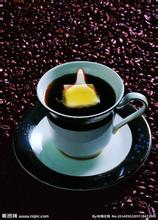The history of coffee how to drink espresso
It used to be the earliest coffee bean seen by Europeans north of the Alps. Legend has it that coffee was so rare in Western Europe that at first there was a joke that German housewives used chicken soup to make coffee. According to scholars' speculation, in the booming import and export trade of seasoning raw materials at the end of the 16th century, many coffee beans from the east began to enter the European continent. However, it was not until 1683 that the first coffee shop in Europe was opened by a Polish in Vienna, Austria. Businessmen who are proficient in Eastern European and Turkish languages, led by the brilliant Armenian businessman Johannes Diodato, not only acted as translators and guides for Austria in wartime, but also engaged in the hugely profitable coffee trade on both sides of the line of fire, meeting the needs of their own cafes, while also solving the urgent shortage of raw materials for many aristocratic and wealthy citizens' family salons. Won the attention of the upper echelons. A few years later, the coffee industry, which can be seen everywhere in the streets and alleys, developed rapidly. Most of these cafes were opened by his fellow villagers or Turks from other parts of the Ottoman Turkish Empire, naturally with a strong Middle Eastern flavor. Many street corners float out of the coffee hot smell of the narrow shop, you can also see the Istanbul coffee shop unique wall bench, open firewood coffee stove Most of the guests come from vendors, craftsmen and craftsmen who make a living in a nearby market. Technically, it's just a small, simple coffee shop. At that time, people in the middle and upper classes were still intoxicated in the closed private coffee circle in their homes, and the free citizens, who were keen on the initial economic success, became a force to influence the social and political society. Today, people are familiar with, or imagine elegant, comfortable, pure European-style cafes with an open social salon atmosphere, and will have to wait for about 50 years, until the Enlightenment era of the general awakening of civic consciousness. to really begin to enter the center of life in Vienna and other western cities.

Important Notice :
前街咖啡 FrontStreet Coffee has moved to new addredd:
FrontStreet Coffee Address: 315,Donghua East Road,GuangZhou
Tel:020 38364473
- Prev

What is the best way to cook coffee beans?
1. Grind beans First grind coffee beans with grinders (the finest grinding degree). If you have a grinder at home or a soymilk machine with crushing function, you can also use it, but the effect is not ideal, and the particles are relatively coarse. If none of these tools are available, it can be done with a rolling pin and a panel. Compaction and mashing methods, in short, to make the particles as fine as possible
- Next

The method of making American coffee is the most fashionable and luxurious coffee shop.
Utensils: after each use, rinse with clean hot water and dry with absorbent paper towels or towels to make sure your coffee utensils are absolutely clean. . Coffee: try to buy freshly roasted coffee beans. Freshly roasted coffee beans are very important for a top cup of coffee. Buy a small amount of coffee and try to use it up within a predetermined period of time. It's best if you can do it every other time.
Related
- Does Rose Summer choose Blue, Green or Red? Detailed explanation of Rose Summer Coffee plots and Classification in Panamanian Jade Manor
- What is the difference between the origin, producing area, processing plant, cooperative and manor of coffee beans?
- How fine does the espresso powder fit? how to grind the espresso?
- Sca coffee roasting degree color card coffee roasting degree 8 roasting color values what do you mean?
- The practice of lattes: how to make lattes at home
- Introduction to Indonesian Fine Coffee beans-- Java Coffee producing area of Indonesian Arabica Coffee
- How much will the flavor of light and medium roasted rose summer be expressed? What baking level is rose summer suitable for?
- Introduction to the characteristics of washing, sun-drying or wet-planing coffee commonly used in Mantenin, Indonesia
- Price characteristics of Arabica Coffee Bean Starbucks introduction to Manning Coffee Bean Taste producing area Variety Manor
- What is the authentic Yega flavor? What are the flavor characteristics of the really excellent Yejasuffi coffee beans?

